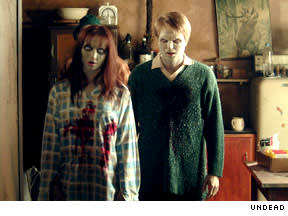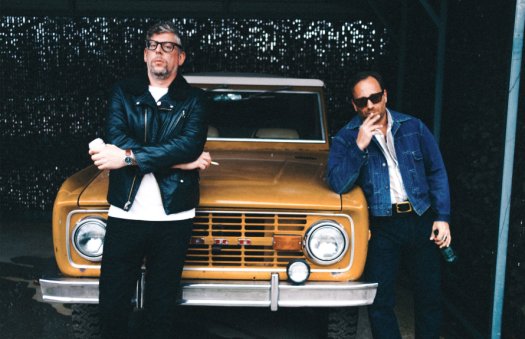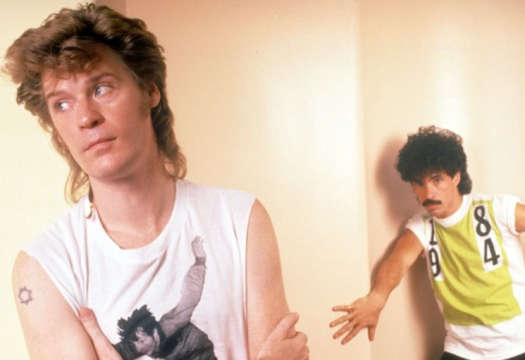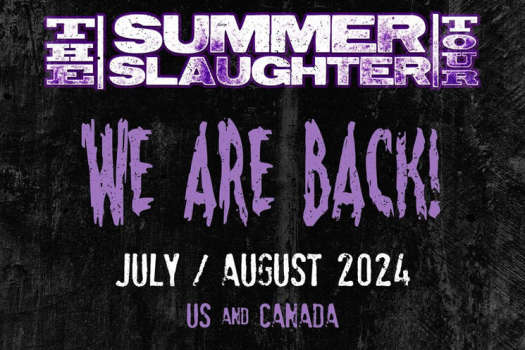Hundreds of them shamble slowly toward you, moaning and murmuring, their rotting bodies moving in horrifying unison, their worm-ridden eye sockets staring blankly at the target of their insatiable hunger: your delicious brain. Zombies are really onto something. Your brain is tender and juicy like putty in the hands of the Hollywood necromancers who have been serving up undead films to audiences since the 1930s.
This year, Hollywood has its eyes set not on your tasty cranium but your fat wallet, as they resurrect this seemingly dead genre with a slew of newly reanimated features and remakes of classics. We've survived low-budget thriller 28 Days Later, squirmed through two zombie-centric Toronto International Film Fest flicks, and eagerly wait to enter The House of the Dead, opening this month. An onslaught of zombie films is currently in production, including a remake of the classic Dawn of the Dead, a sequel to Resident Evil, and two rumoured sequels to the Return of the Living Dead series.
Don't expect any new twists on the tale, though. Zombies haven't changed much since their 1932 motion picture debut in White Zombie. There are arguably only three basic types of zombies. The necromantic zombie is resurrected by sorcery or other dark magic, and is found in movies such as The Gates of Hell (Lucio Fulci, 1981) or The Evil Dead (Sam Raimi, 1981). Science zombies are the product of bizarre experiments, dangerous chemicals, radiation, or rampaging viruses, and are found in movies such as Dawn of the Dead (George A. Romero, 1978) and The Return of the Living Dead (Dan O'Bannon, 1985). Alien zombies are those of otherworldly origin such as the pod-grown replacement humans found in the oft-remade Invasion of the Bodysnatchers (Dan Siegel, 1956). Despite different origins, some fundamentals remain: they have a hive-mind, and are more effective in larger numbers; they're are hard to kill, but will eventually succumb to conventional weaponry; and they are relentless and insatiable in the pursuit of their goals.
Those goals include: murder (the death of all living things); companionship (join them, won't you?); propagation (virulent and infectious, one cough, lick or bite could turn today's human into tomorrow's undead legionnaire); sustenance (zombies have to eat too, mostly human flesh); and service (many zombies follow the orders of a power greater than themselves, be it Satan, a voodoo priest, aliens or the military).
"They're bloated, they're grotesque, they feed on human flesh there's nothing sexy about that," says Edo Van Belkom, a lauded Canadian author who won an Aurora Award for his horror anthology Be Very Afraid at the World Science Fiction Convention held this year in Toronto. "If you had to go down the list of monsters, they're the most horrific."
Horror fans love to be frightened, and the grotesque undead seem to fit the bill, but as far as the typical zombie is concerned, our love affair with fear is in jeopardy. "I think any of these mainstream movies are going to pale in comparison to the movies of Fulci and Franco. There are always these better movies, these classics, just underneath the radar." But Belkom knows new zombie films have a hollow advantage over their predecessors. "The remake of Dawn of the Dead is going to look great [and will] make [splatter king] Tom Savini look like an amateur they will have more money, the best people, and unlimited access to supplies. But to my way of thinking, Romero already did Dawn of the Dead. It doesn't need to be redone."
Today's glut of zombie films is merely a fast food fix. Dread and suspense has been replaced with gore and special effects, immediately gratifying audiences but leaving them with a gnawing hunger. We know all about zombies how they are created, and how to stop them. In its unrelenting adherence to cliché, Hollywood is about to do the zombie genre to death.
This year, Hollywood has its eyes set not on your tasty cranium but your fat wallet, as they resurrect this seemingly dead genre with a slew of newly reanimated features and remakes of classics. We've survived low-budget thriller 28 Days Later, squirmed through two zombie-centric Toronto International Film Fest flicks, and eagerly wait to enter The House of the Dead, opening this month. An onslaught of zombie films is currently in production, including a remake of the classic Dawn of the Dead, a sequel to Resident Evil, and two rumoured sequels to the Return of the Living Dead series.
Don't expect any new twists on the tale, though. Zombies haven't changed much since their 1932 motion picture debut in White Zombie. There are arguably only three basic types of zombies. The necromantic zombie is resurrected by sorcery or other dark magic, and is found in movies such as The Gates of Hell (Lucio Fulci, 1981) or The Evil Dead (Sam Raimi, 1981). Science zombies are the product of bizarre experiments, dangerous chemicals, radiation, or rampaging viruses, and are found in movies such as Dawn of the Dead (George A. Romero, 1978) and The Return of the Living Dead (Dan O'Bannon, 1985). Alien zombies are those of otherworldly origin such as the pod-grown replacement humans found in the oft-remade Invasion of the Bodysnatchers (Dan Siegel, 1956). Despite different origins, some fundamentals remain: they have a hive-mind, and are more effective in larger numbers; they're are hard to kill, but will eventually succumb to conventional weaponry; and they are relentless and insatiable in the pursuit of their goals.
Those goals include: murder (the death of all living things); companionship (join them, won't you?); propagation (virulent and infectious, one cough, lick or bite could turn today's human into tomorrow's undead legionnaire); sustenance (zombies have to eat too, mostly human flesh); and service (many zombies follow the orders of a power greater than themselves, be it Satan, a voodoo priest, aliens or the military).
"They're bloated, they're grotesque, they feed on human flesh there's nothing sexy about that," says Edo Van Belkom, a lauded Canadian author who won an Aurora Award for his horror anthology Be Very Afraid at the World Science Fiction Convention held this year in Toronto. "If you had to go down the list of monsters, they're the most horrific."
Horror fans love to be frightened, and the grotesque undead seem to fit the bill, but as far as the typical zombie is concerned, our love affair with fear is in jeopardy. "I think any of these mainstream movies are going to pale in comparison to the movies of Fulci and Franco. There are always these better movies, these classics, just underneath the radar." But Belkom knows new zombie films have a hollow advantage over their predecessors. "The remake of Dawn of the Dead is going to look great [and will] make [splatter king] Tom Savini look like an amateur they will have more money, the best people, and unlimited access to supplies. But to my way of thinking, Romero already did Dawn of the Dead. It doesn't need to be redone."
Today's glut of zombie films is merely a fast food fix. Dread and suspense has been replaced with gore and special effects, immediately gratifying audiences but leaving them with a gnawing hunger. We know all about zombies how they are created, and how to stop them. In its unrelenting adherence to cliché, Hollywood is about to do the zombie genre to death.




